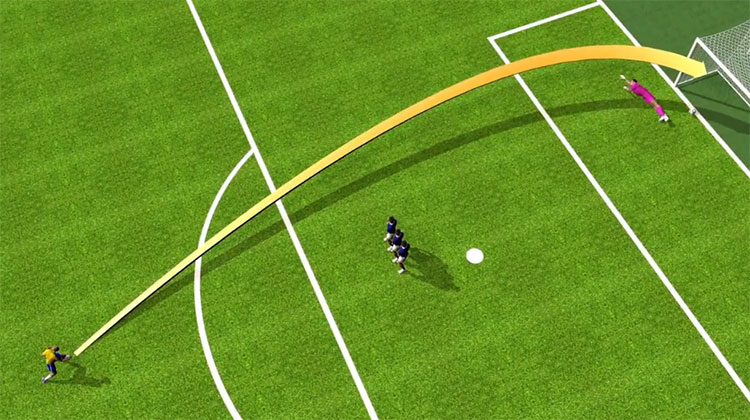The effect creates a swirling shot in football
Swirling is a very popular finishing technique in football, especially when it comes to penalties.
The aerodynamic force (the force exerted by the air on a moving object) makes the balloon follow a curved trajectory. Instead of hitting the center of the ball, the player will deflect to the side so that the ball rotates in the air.

Instead of hitting the center of the ball, the player will deflect to the side so that the ball rotates in the air.
Swirling shadows create turbulent air currents around. Initially, the ball moved almost in a straight line due to very little resistance. But then, the air becomes more chaotic, increasing resistance and slowing the ball down. Then the vortex creates a speed difference between the air currents on either side of the ball, creating an effect called Magnus .
Specifically, on one side, the air moves in the same direction as the ball's rotation so the gas molecules move faster. On the opposite side, the ball swirls in the opposite direction with the direction of air movement, causing a drag on the gas molecules to slow down.
According to Bernouilli's principle, when the velocity of the air flow increases, the air pressure will decrease and vice versa. The static pressure difference creates an impact force on the ball, causing the ball to be drawn towards the lower pressure, creating the curvature of the ball.
- Watch football cure mental illness
- 10 facts about football - global hegemony sport
- Mysterious science behind the direct free kick
- Why watch football help you be healthy and happy?
- Poison about football fans 100 years ago
- Why are women playing football more dangerous than men?
- The way to produce a football is more complicated than you think!
- Men like football more than beautiful girls
- Science entered: Watching football is good but many people are so passionate?
- Maths football match
- Why are people crazy about football?
- The truth 'definitely has to know' about football betting
 'Fine laughs' - Scary and painful torture in ancient times
'Fine laughs' - Scary and painful torture in ancient times The sequence of numbers 142857 of the Egyptian pyramids is known as the strangest number in the world - Why?
The sequence of numbers 142857 of the Egyptian pyramids is known as the strangest number in the world - Why? History of the iron
History of the iron What is alum?
What is alum?